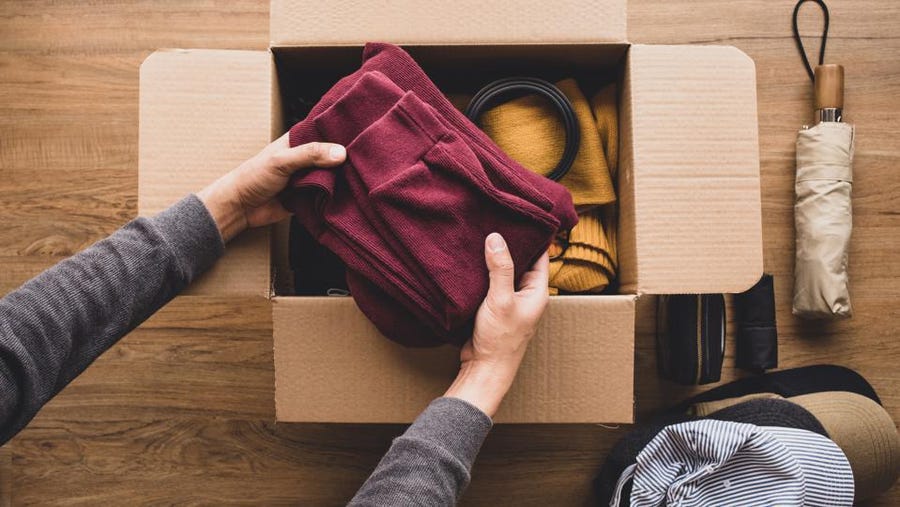The reality of why moves sound so overwhelming and terrifying is because of the packing part. Just the thought of having to break down and store a lifetime’s worth of things into boxes is enough to send one into a full-blown panic attack. Your experiences with packing for a move might be limited or unfortunate, which is why you’re not looking forward to having to go through the experience again.
If you approach this the right way, packing for a move can be a very disciplined, structured, and pleasant experience. So, unlearn everything you already know about packing and completely redo the narrative in your mind. We’re going to offer you a crash course on how to pack for a move, and you’re going to take it. Stick around to learn the best tips to pack efficiently for a move!
Put thought into your packing material.
What you might have been imparted about the equipment you need to pack is that it’s disposable, so quality doesn’t really come into the picture. However, if you really think about it, cheap packing material will cost you more in the long run. Think of the items that are heavy and likely to spill out of the boxes and tape, unable to hold them together. This means breakage, damage, and a whole lot of unexpected costs.
This doesn’t mean you have to spend considerably on packing material. Instead, just ask around; lots of your friends and family will have in their storage good quality packing material that has come in handy for them in several moves. When packing for a move, be realistic about how able a particular material is to safely hold the items you’re putting inside it.
Make an inventory.
This might sound like an unnecessary added step in the packing process because you’ve never had to do it before, and the moves turned out just fine. Except the packing and move didn’t turn out just fine, which might most likely have been because of skipping this step in the first place. Knowing your items and then packing them accordingly will save you from the loss that comes from misplacing items during a move, which is actually very common.
You’ll also find it easier to locate things when you need to unpack them. Doing inventory is also important when packing for a move because you’ll be having movers in and out of your house, and the likelihood of things going missing is always there. Save yourself from the unneeded stress of locating things and eventually coming to the conclusion that they’re gone for good.
Have a sequence.
Nothing says ill-done packing like one that consists of you stuffing items from every part of the house into random boxes. Think of the absolute nightmare all of that is going to be when you have to unpack and settle in. The most functional way to avoid this is to have a mind map to approach the packing process. Do one room at a time, so the items for it are close by and easy to locate too.
The one rule when packing for a move is to make sure to progress from harder rooms to easier ones. This demands that you do your kitchen items first because there are just too many categories of items to pack there, and they’re fragile, so they’re going to take time. Move on to the common spaces of your house where the bigger furniture is, and then address bedrooms, which can be divided for every person to pack their own belongings.
Labels need to be in the picture.
Although social media might currently be telling us that putting labels on relationships is a bad idea, putting them on your packing boxes is certainly not. Having gone through the entire process of making inventory and packing things in a sequence won’t come in handy until you label boxes according to their contents. Boxes can get misplaced or end up in other rooms even when you’ve monitored everything to the last dot.
Make sure to label according to rooms, too, so movers know where to put boxes without having to take directions from you at every turn. The thing about efficient packing is that it doesn’t only make a move easy but every process that comes after that too. Labels are especially helpful for keeping disassembled furniture together because nothing stresses one out quite like losing parts of furniture items that ultimately render them useless.
Pack essentials separately.
When packing for a move, the goal isn’t to get everything into boxes and have it only accessible when you’re moving in. There are going to be many items that you’ll need while you load, during the journey, and immediately as you move into the new house. Make sure to pack these essentials in easily accessible storage materials like duffel bags or backpacks.
Items like toiletries, chargers, and a change of clothes, should all be packed efficiently and always within reach. Other important things that might be needed during the journey to the new home need to be carefully thought of and packed accordingly.
Mark items that need extra care.
Nothing renders a move as sour as having valuable items damaged. While not every element can be controlled during a move, you need to make sure that you pack efficiently to avoid as many obstacles and bumps as possible. Mark fragile items as such and keep them in a separate room so that they can be loaded last and carefully too. Everything from furniture, electronics, and décor pieces that are a risk of breaking easily need to be packed with extra attention.
The essential thing to keep in mind when packing for a move is that this is the process that’s going to largely determine out the rest of the move pans out. It’s better to be safe and take precautionary measures instead of later going through the trouble of seeking compensation when damages occur during a move.


